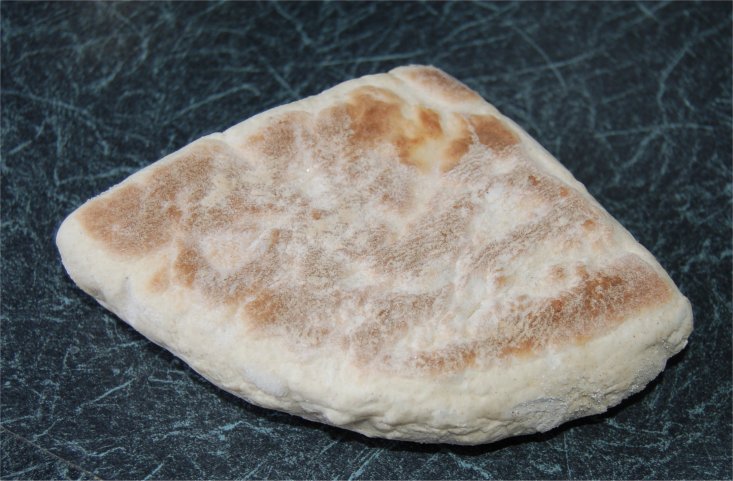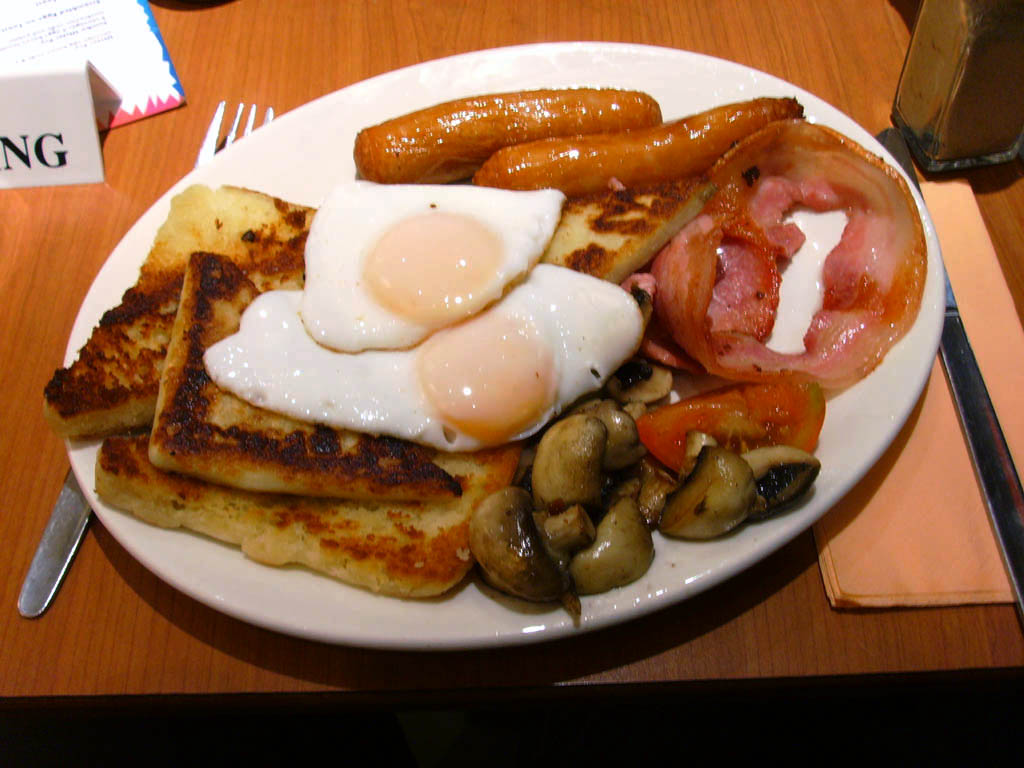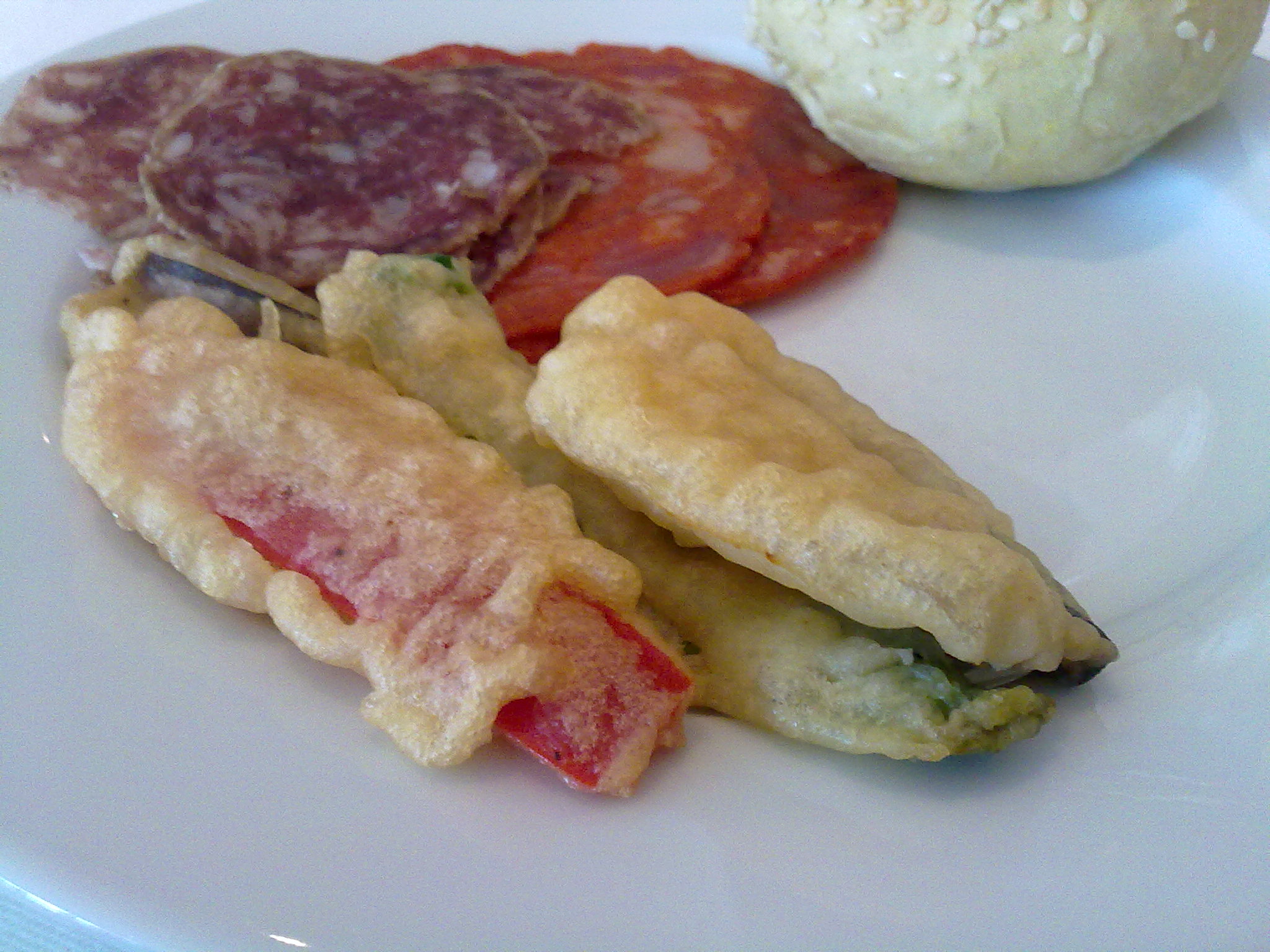|
Pastie
A pastie is a large to medium-sized battered deep-fried round of minced meat and vegetables common to Northern Ireland. Generally served with chips to form a "pastie supper" ("supper" in Northern Irish chip shops means something with chips), or in a white roll as a "pastie bap" or "pastie burger" it is a common staple in most fish and chip shops in the country. Recipes vary, but the most common ingredients are minced pork, onion, potato and seasoning formed into a "round" (just like a burger), which is then covered in a batter mix and deep fried. Traditionally, chip shops coloured the pastie's filling with a cochineal dye, giving it a bright pink colour, supposedly to make the snack more appetising. Many shops have stopped using this method due to cochineal allergies. See also * Northern Irish cuisine * List of Irish dishes * Pastry * Pasty A pasty () is a British baked pastry, a traditional variety of which is particularly associated with Cornwall, South West Engl ... [...More Info...] [...Related Items...] OR: [Wikipedia] [Google] [Baidu] |
Pasty
A pasty () is a British baked pastry, a traditional variety of which is particularly associated with Cornwall, South West England, but has spread all over the British Isles. It is made by placing an uncooked filling, typically meat and vegetables, on one half of a flat shortcrust pastry circle, folding the pastry in half to wrap the filling in a semicircle and crimping the curved edge to form a seal before baking. The traditional Cornish pasty, which since 2011 has had Geographical indications and traditional specialities in the European Union, Protected Geographical Indication (PGI) status in Europe, is filled with beef, sliced or diced potato, rutabaga, swede (also known as yellow turnip or rutabaga – referred to in Cornwall and other parts of the West Country as turnip) and onion, seasoned with salt and pepper, and baking, baked. Today, the pasty is the food most associated with Cornwall. It is a traditional dish and accounts for 6% of the Cornish food economy. Pasties wit ... [...More Info...] [...Related Items...] OR: [Wikipedia] [Google] [Baidu] |
Pastie Supper Ben W Bell 27 March 2006
A pastie is a large to medium-sized battered deep-fried round of minced meat and vegetables common to Northern Ireland. Generally served with chips to form a "pastie supper" ("supper" in Northern Irish chip shops means something with chips), or in a white roll as a "pastie bap" or "pastie burger" it is a common staple in most fish and chip shops in the country. Recipes vary, but the most common ingredients are minced pork, onion, potato and seasoning formed into a "round" (just like a burger), which is then covered in a batter mix and deep fried. Traditionally, chip shops coloured the pastie's filling with a cochineal dye, giving it a bright pink colour, supposedly to make the snack more appetising. Many shops have stopped using this method due to cochineal allergies. See also * Northern Irish cuisine * List of Irish dishes * Pastry * Pasty A pasty () is a British baked pastry, a traditional variety of which is particularly associated with Cornwall, South West Engl ... [...More Info...] [...Related Items...] OR: [Wikipedia] [Google] [Baidu] |
Cuisine Of Northern Ireland
Northern Irish cuisine encompasses the cooking styles, traditions and recipes associated with Northern Ireland. It has distinctive attributes of its own, but has also drawn heavily from Irish and British cuisines. History Northern Ireland's culinary heritage has its roots in the staple diet of generations of farming families: bread and potatoes. Historically, limited availability of ingredients and low levels of immigration resulted in restricted variety and relative isolation from wider international culinary influences. Recent decades, however, have seen significant developments in the local cuisine, characterised by an increase in the variety, quantity and quality of gastropubs and restaurants. There are currently two Michelin-starred restaurants in Northern Ireland, both of which specialise in traditional dishes made using local ingredients. Northern Irish cuisine received international attention in March 2018 when it was reported that Prince Harry and Meghan Markle had Ir ... [...More Info...] [...Related Items...] OR: [Wikipedia] [Google] [Baidu] |
List Of Irish Dishes
This is a list of dishes found in Ireland. Irish cuisine is a style of cooking originating from Ireland, developed or adapted by Irish people. It evolved from centuries of social and political change, and in the 20th and 21st century has more international influences. The cuisine takes its influence from the crops grown and animals farmed in its temperate climate. The introduction of the potato in the second half of the 16th century heavily influenced Ireland's cuisine thereafter and, as a result, is often closely associated with Ireland. Representative Irish dishes include Irish stew, bacon and cabbage, boxty, coddle, and colcannon. Irish dishes See also * List of Republic of Ireland food and drink products with protected status * List of restaurant chains in Ireland * Pork in Ireland Pork in Ireland has been a key part of the Irish diet since prehistory. Ireland's flora and fauna overwhelmingly arrived via a Neolithic land bridge from Great Britain prior to its submerging arou ... [...More Info...] [...Related Items...] OR: [Wikipedia] [Google] [Baidu] |
Northern Irish Cuisine
Northern Irish cuisine encompasses the cooking styles, traditions and recipes associated with Northern Ireland. It has distinctive attributes of its own, but has also drawn heavily from Irish and British cuisines. History Northern Ireland's culinary heritage has its roots in the staple diet of generations of farming families: bread and potatoes. Historically, limited availability of ingredients and low levels of immigration resulted in restricted variety and relative isolation from wider international culinary influences. Recent decades, however, have seen significant developments in the local cuisine, characterised by an increase in the variety, quantity and quality of gastropubs and restaurants. There are currently two Michelin-starred restaurants in Northern Ireland, both of which specialise in traditional dishes made using local ingredients. Northern Irish cuisine received international attention in March 2018 when it was reported that Prince Harry and Meghan Markle had I ... [...More Info...] [...Related Items...] OR: [Wikipedia] [Google] [Baidu] |
Cochineal Dye
Carmine ()also called cochineal (when it is extracted from the cochineal insect), cochineal extract, crimson lake, or carmine lake is a pigment of a bright-red color obtained from the aluminium complex derived from carminic acid. Specific code names for the pigment include natural red 4, C.I. 75470, or E120. ''Carmine'' is also a general term for a particularly deep-red color. Etymology The English word "carmine" is derived from the French word ''carmin'' (12th century), from Medieval Latin ''carminium'', from Persian ''qirmiz'' ("crimson"), which itself derives from Middle Persian ''carmir'' ("red, crimson"). The Persian term ''carmir'' is likely cognate with Sanskrit ''krimiga'' ("insect-produced"), from ''krmi'' ("worm, insect"). The Persian word for "worm, insect" is ''kirm'', and in Iran (Persia) the red colorant carmine was extracted from the bodies of dead female insects such as ''Kermes vermilio'' and cochineal. The form of the term may also have been influen ... [...More Info...] [...Related Items...] OR: [Wikipedia] [Google] [Baidu] |
Pastry
Pastry is baked food made with a dough of flour, water and shortening (solid fats, including butter or lard) that may be savoury or sweetened. Sweetened pastries are often described as '' bakers' confectionery''. The word "pastries" suggests many kinds of baked products made from ingredients such as flour, sugar, milk, butter, shortening, baking powder, and eggs. Small tarts and other sweet baked products are called pastries as a synecdoche. Common pastry dishes include pies, tarts, quiches, croissants, and pasties. The French word pâtisserie is also used in English (with or without the accent) for the same foods. Originally, the French word referred to anything, such as a meat pie, made in dough (''paste'', later ''pâte'') and not typically a luxurious or sweet product. This meaning still persisted in the nineteenth century, though by then the term more often referred to the sweet and often ornate confections implied today. Pastry can also refer to the pastry dough, from w ... [...More Info...] [...Related Items...] OR: [Wikipedia] [Google] [Baidu] |
Cochineal Dye
Carmine ()also called cochineal (when it is extracted from the cochineal insect), cochineal extract, crimson lake, or carmine lake is a pigment of a bright-red color obtained from the aluminium complex derived from carminic acid. Specific code names for the pigment include natural red 4, C.I. 75470, or E120. ''Carmine'' is also a general term for a particularly deep-red color. Etymology The English word "carmine" is derived from the French word ''carmin'' (12th century), from Medieval Latin ''carminium'', from Persian ''qirmiz'' ("crimson"), which itself derives from Middle Persian ''carmir'' ("red, crimson"). The Persian term ''carmir'' is likely cognate with Sanskrit ''krimiga'' ("insect-produced"), from ''krmi'' ("worm, insect"). The Persian word for "worm, insect" is ''kirm'', and in Iran (Persia) the red colorant carmine was extracted from the bodies of dead female insects such as ''Kermes vermilio'' and cochineal. The form of the term may also have been influen ... [...More Info...] [...Related Items...] OR: [Wikipedia] [Google] [Baidu] |
Deep Frying
Deep frying (also referred to as deep fat frying) is a cooking method in which food is submerged in hot fat, traditionally lard but today most commonly oil, as opposed to the shallow oil used in conventional frying done in a frying pan. Normally, a deep fryer or chip pan is used for this; industrially, a pressure fryer or vacuum fryer may be used. Deep frying may also be performed using oil that is heated in a pot. Deep frying is classified as a hot-fat cooking method. Typically, deep frying foods cook quickly: all sides of the food are cooked simultaneously as oil has a high rate of heat conduction. The term "deep frying" and many modern deep-fried foods were not invented until the 19th century, but the practice has been around for millennia. Early records and cookbooks suggest that the practice began in certain European countries before other countries adopted the practice. Deep frying is popular worldwide, with deep-fried foods accounting for a large portion of global cal ... [...More Info...] [...Related Items...] OR: [Wikipedia] [Google] [Baidu] |
Deep-fried
Deep frying (also referred to as deep fat frying) is a cooking method in which food is submerged in hot fat, traditionally lard but today most commonly oil, as opposed to the shallow oil used in conventional frying done in a frying pan. Normally, a deep fryer or chip pan is used for this; industrially, a pressure fryer or vacuum fryer may be used. Deep frying may also be performed using oil that is heated in a pot. Deep frying is classified as a hot-fat cooking method. Typically, deep frying foods cook quickly: all sides of the food are cooked simultaneously as oil has a high rate of heat conduction. The term "deep frying" and many modern deep-fried foods were not invented until the 19th century, but the practice has been around for millennia. Early records and cookbooks suggest that the practice began in certain European countries before other countries adopted the practice. Deep frying is popular worldwide, with deep-fried foods accounting for a large portion of global calor ... [...More Info...] [...Related Items...] OR: [Wikipedia] [Google] [Baidu] |
Batter (cooking)
Batter is a flour mixture with liquid and other ingredients such as sugar, salt and leavening agent, leavening used for cooking. It usually contains more liquid than doughs, which are also mixtures of flour and liquid. Batters are usually a pourable consistency that can't be kneaded. Batter is most often used for pancakes, light cakes, and as a coating for fried foods. It is also used for a variety of batter breads. The word ''batter'' comes from the French word ''battre'', which means ''to beat'', as many batters require vigorous beating or whisking in their preparation. Methods Many batters are made by combining dry flours with liquids such as water, milk or egg as food, eggs. Batters can also be made by soaking grains in water and grinding them wet. Often a leavening agent such as baking powder is included to aerate and fluff up the batter as it cooks, or the mixture may be naturally Fermentation (food), fermented for this purpose as well as to add flavour. Carbonated water ... [...More Info...] [...Related Items...] OR: [Wikipedia] [Google] [Baidu] |
Patty
A patty or burger (in British English) is a flattened, usually round, serving of ground meat and/or legumes, grains, vegetables, or meat alternatives. Patties are found in multiple cuisines throughout the world. In British and American English, minced meat that is formed into a disc is called a burger, whether it is in a bread roll or not. The word “patty” is also used in American English but almost unknown in British English. The ingredients are compacted and shaped, usually cooked, and served in various ways. Some foods termed "patties" use ingredients inside a pastry crust that is then baked or fried. Some patties are breaded, then baked or fried. In London, since the late 1980s, the Jamaican patty, similar to the Cornish pastie, is a common food item. Etymology The term originated in the 17th century as an English alteration of the French word pâté. According to the OED, it is related to the word pasty, which is various ingredients encased in pastry. Termino ... [...More Info...] [...Related Items...] OR: [Wikipedia] [Google] [Baidu] |





_04_ies.jpg)



